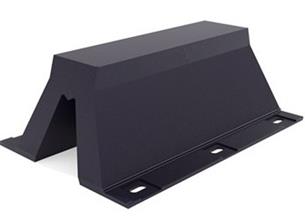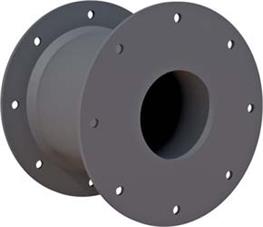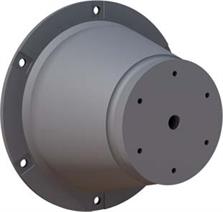Calculating Hull Pressure |
| Author : Date : 2018-03-15 3:29:08 |
The most commonly accepted practice for calculating hull pressure is to calculate the average hull pressure by dividing the reaction of the marine fender over the entire frontal flat area of the marine fender panel. While this calculation normally serves as a good parameter for sizing fender panels often times it does not truly depict the true loading scenario between the hull of the vessel and the panel. Non symmetric fender arrangements, hull belting, and hull flare are just few examples of obstructions which cause the panel loading to be anything but evenly distributed. However, even in the case of a flat hull berthing against the face of flat panel, the loading cannot truly be considered fully distributed. Since the hull of most vessels are commonly designed with an external plate membrane supported by an internal structure of stiffer gussets, the high berthing loads will be more directly transferred into the internal frames of the vessel rather than the membrane of the vessel. As the hulls external membrane is loaded, it will deflect slightly until the loading is almost completely transferred into the frames of the vessel. Due to this loading phenomenon fender panels must be designed such that they are capable of bridging the gaps between adjacent hull frames. If properly designed this is actually a favorable loading condition for the vessel since the hull; which is not meant to handle high compressive loads, will be somewhat spared as the panel bridges the girders and imparts most of the fender reaction directly into the frames of the vessel designed for high shear loads. More and more vessels are being designed with gussets that are farther and farther apart. While panel systems are good at bridging these gaps, this condition is starting to cause problems for marine fender systems that do not use a panel such as foam and pneumatic fenders. Such fendering system impart a truly hydrostatic load into the hull of the vessel which is likely to deflect the hulls external membrane so greatly that there exists the potential for permanent deformation on the hull of the vessel. As vessel design evolves designers must always be cognizant of the true load transfer between panel and vessel. |

 info@dolphinmarines.com
info@dolphinmarines.com

